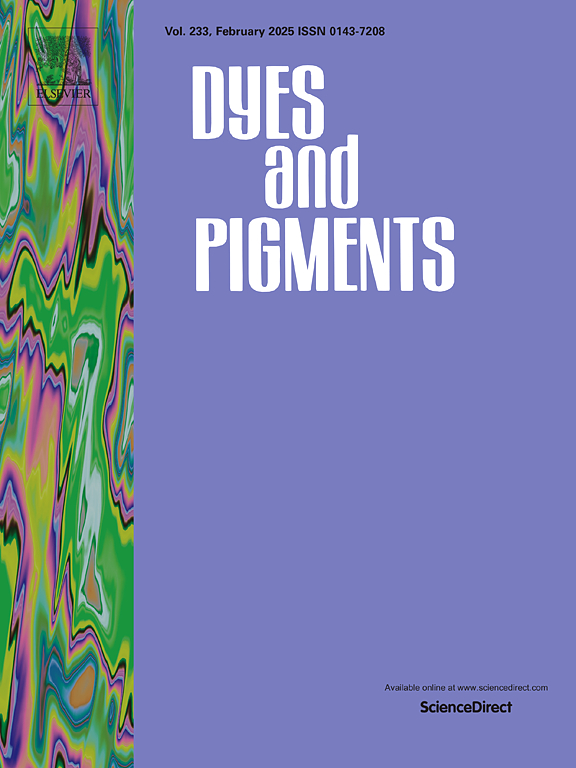用于高性能红色和绿色磷光有机发光二极管的吲哚咔唑和苯并呋喃咔唑基双极性主体材料
IF 4.1
3区 工程技术
Q2 CHEMISTRY, APPLIED
引用次数: 0
摘要
本研究战略性地设计合成了DMID-BP和BFCz-BP两种新型双极主体材料,首次将其应用于红绿磷光有机发光二极管中。这两种化合物均表现出显著的双极性载流子输运特性,排列良好的HOMO和LUMO能级,以及优异的热稳定性,Tg值分别为185℃和171℃。用这两种材料制备的红色和绿色磷光有机发光二极管(PhOLEDs)具有较高的发光效率和较低的滚降效率。值得注意的是,R1器件采用DMID-BP作为宿主材料,实现了23.68%的最大外量子效率(EQEmax),大大超过了迄今为止报道的大多数传统宿主材料。此外,基于BFCz-BP的R2器件也达到了20.26%的高EQEmax。因此,所有的结果都强调了这两种主体材料在红色和绿色oled应用中的巨大潜力。本文章由计算机程序翻译,如有差异,请以英文原文为准。
Indenocarbazole and benzofurocarbazole-based bipolar host materials for high-performance red and green Phosphorescent Organic Light-Emitting Diodes
In this research, two innovative bipolar host materials, DMID-BP and BFCz-BP, were strategically designed and synthesized, marking the first application of these materials in red and green phosphorescent organic light-emitting diodes. Both compounds exhibit remarkable bipolar carrier transport properties, well aligned HOMO and LUMO levels, and exceptional thermal stability, with Tg value of 185 °C and 171 °C, respectively. The red and green Phosphorescent Organic Light-Emitting Diodes (PhOLEDs) fabricated with these two materials demonstrate high light-emitting efficiency along with low efficiency roll-off. Notably, R1 device, utilizing DMID-BP as the host material, achieves an impressive maximum external quantum efficiency (EQEmax) of 23.68 %, significantly surpassing most conventional host materials reported to date. Additionally, the R2 device, based on BFCz-BP, also attains a high EQEmax of 20.26 %. Consequently, all the results underscore the significant potential of these two host materials for applications in both red and green PhOLEDs.
求助全文
通过发布文献求助,成功后即可免费获取论文全文。
去求助
来源期刊

Dyes and Pigments
工程技术-材料科学:纺织
CiteScore
8.20
自引率
13.30%
发文量
933
审稿时长
33 days
期刊介绍:
Dyes and Pigments covers the scientific and technical aspects of the chemistry and physics of dyes, pigments and their intermediates. Emphasis is placed on the properties of the colouring matters themselves rather than on their applications or the system in which they may be applied.
Thus the journal accepts research and review papers on the synthesis of dyes, pigments and intermediates, their physical or chemical properties, e.g. spectroscopic, surface, solution or solid state characteristics, the physical aspects of their preparation, e.g. precipitation, nucleation and growth, crystal formation, liquid crystalline characteristics, their photochemical, ecological or biological properties and the relationship between colour and chemical constitution. However, papers are considered which deal with the more fundamental aspects of colourant application and of the interactions of colourants with substrates or media.
The journal will interest a wide variety of workers in a range of disciplines whose work involves dyes, pigments and their intermediates, and provides a platform for investigators with common interests but diverse fields of activity such as cosmetics, reprographics, dye and pigment synthesis, medical research, polymers, etc.
 求助内容:
求助内容: 应助结果提醒方式:
应助结果提醒方式:


